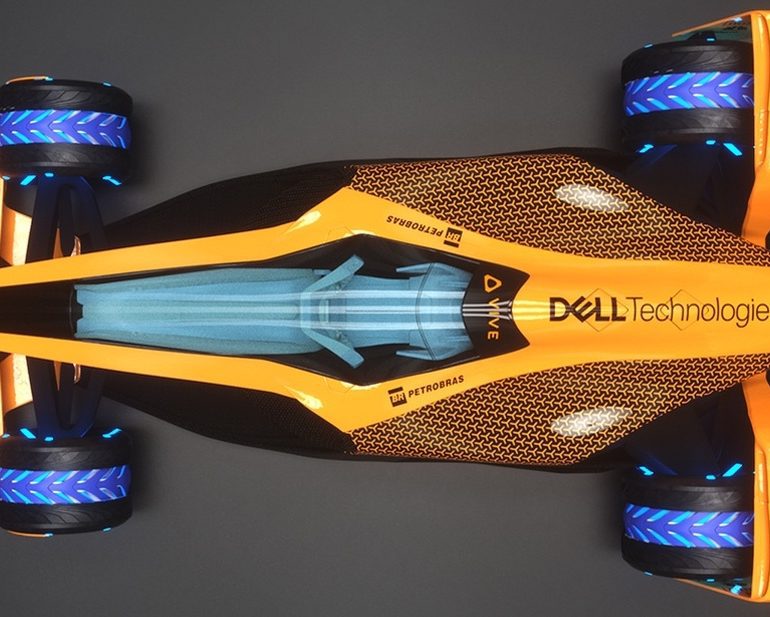Things Could Get Weird
Looking like a mashup of TRON and every futuristic racing video game you can imagine, McLaren Applied Technologies has a vision for F1 racing in 2050. It is nothing if not exciting. The company talked with fans, racecar drivers, engineers, and others intimately involved in Formula 1 racing to create a vision of the future for the sport.
McLaren chose 2050 as the year to focus on. It chose that because 2050 marks 100 years for F1 racing. The car that the company came up with is called the MCLExtreme. The car has an open-wheel design and includes a driver, but uses futuristic technology. That tech includes shapeshifting active aerodynamics, an onboard advanced AI co-pilot, all-electric powertrain with 500 km/h inductive charging, autonomous and mixed reality technology and a whole lot more.




